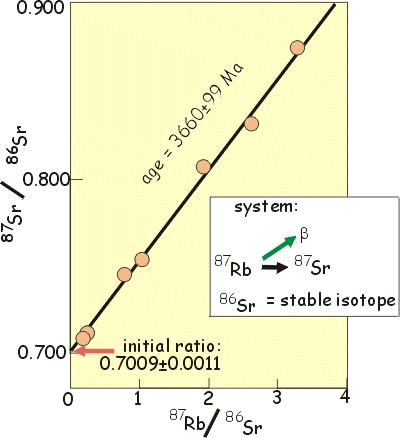

This example comes from some of the oldest rocks on Earth. A suite of different samples from a group of granites and granitic gneisses (sheared and recrystallised granite) were analysed. These had different concentrations of parent rubidium 87 and so generated different amounts of the daughter (strontium 87). The resulting data plot on a straight line - called an isochron. Literally this means that all samples have seen the same amount of time. If different samples had formed at different times (e.g. a random collection of rocks on earth) then the data would not fall on a straight line (no single isochron). The next links just go through this analysis.